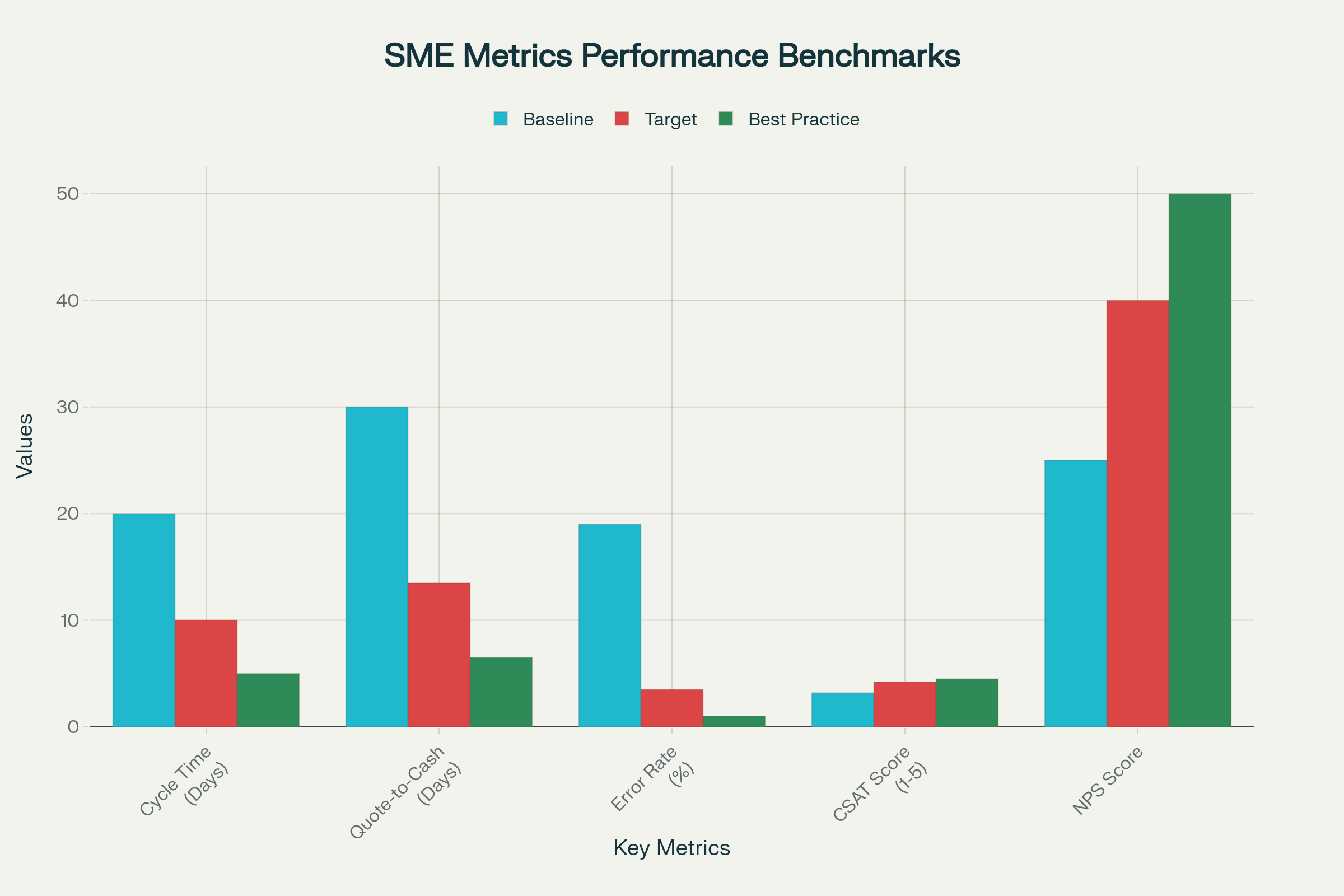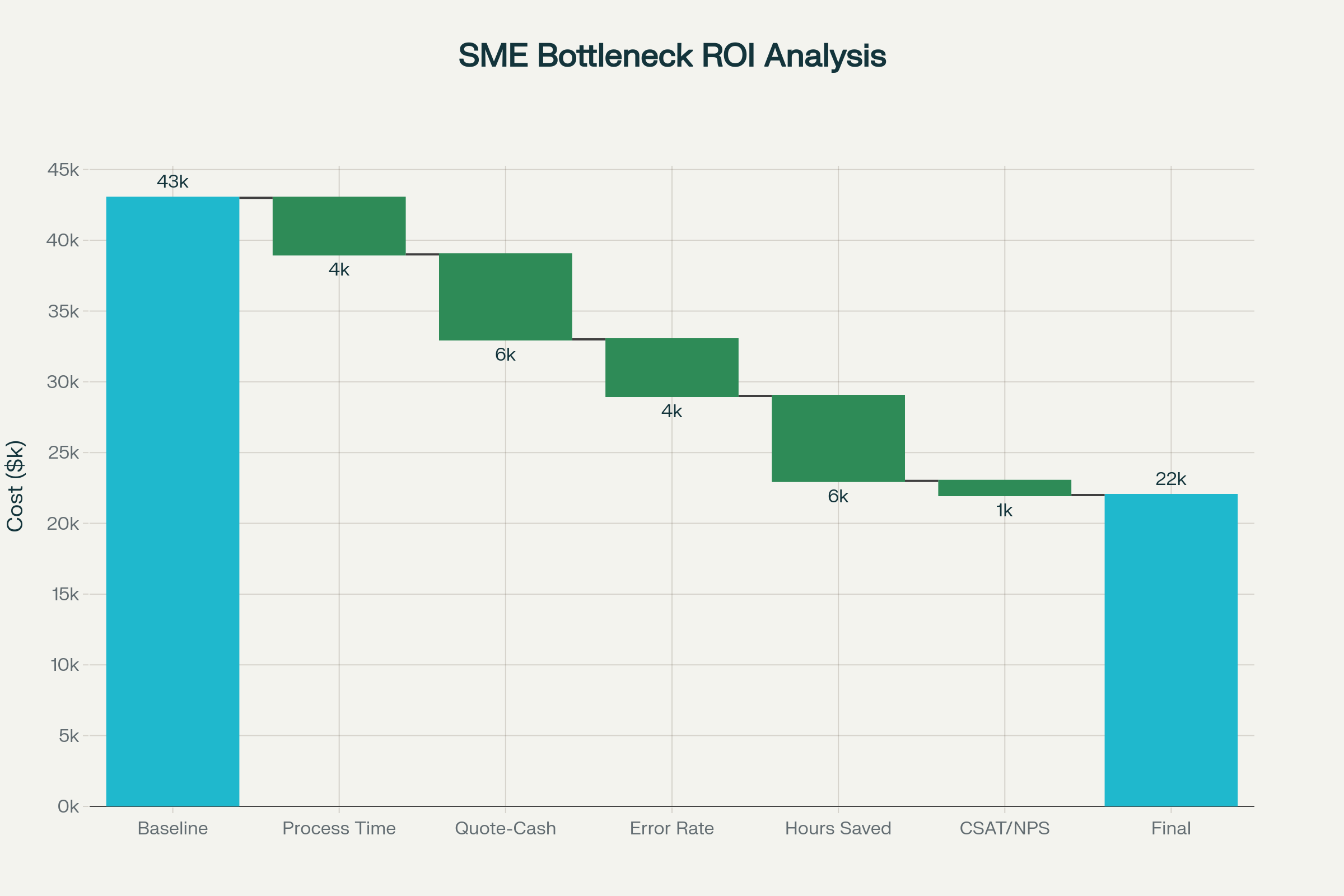
Let me ask you a question. How much of your last forecasting meeting was based on hard data, and how much was based on… well, vibes? If you're like most business owners, you've got dashboards up to your eyeballs, but you still feel like you're flying blind. You're drowning in data but starving for answers.
What if I told you that you could ditch 90% of your reports and run your entire business with just five numbers?
I've spent the last decade in the trenches with hundreds of SME leaders, from SaaS founders to manufacturing COOs. And I can tell you this: they all share the same frustration. They're tired of metrics that don't connect to reality, reports that take days to build, and forecasts that fall apart by the second week of the quarter. They just want to know what's really going on, where the logjams are, and where the next fire is going to start.
It's not about more data. It's about the right data.
The problem isn't a lack of numbers; it's a lack of clarity. We've been taught to track everything, creating a cockpit with a thousand blinking lights but no clear indicator for "altitude" or "fuel."
This is your way out of that cockpit. We're going to focus on five, and only five, metrics that tell you the real story of your business's health. These aren't vanity metrics. They're operational truths that connect directly to your cash flow, your capacity, and your customers' happiness.
Ready to stop guessing? Let's get to it.
Forget vague terms like "productivity." Cycle time is brutally simple: How long does it take to get something important done?
Think of it as the time on the ticket. How long does it take to get from Point A to Point B?
Every process has a cycle time. And hidden inside that number are your biggest bottlenecks.
Why does this matter? Long cycle times are where costs hide, customer frustration festers, and your competitors can eat your lunch. If your sales cycle is 90 days and your competitor's is 45, who do you think is going to win over time?
You don't need fancy software to start.
Now you have a real number, a baseline. You've replaced a "feeling" with a fact. And once you have a fact, you can start asking the right questions. Why does it take 10 days? Where are things getting stuck?

This might be the most critical metric for any small or mid-sized business. Quote-to-Cash (Q2C) measures one thing: How fast do you turn a customer's "yes" into money in the bank?
It sounds simple, but the journey from a signed quote to a paid invoice is often a minefield of manual handoffs, approvals, and data entry errors.
This is where your business bleeds cash.
A slow Q2C cycle is a silent killer. It strangles your cash flow, forcing you to rely on credit lines to make payroll while you wait for money that is rightfully yours. Every day you shave off this cycle is pure cash you can reinvest in the business.
Where do the delays happen?
These aren't sexy problems. But fixing them has a bigger impact on your bottom line than almost any marketing campaign you could run.
Hiring is expensive and time-consuming. What if you could unlock 20% more capacity from your existing team without anyone working longer hours? That's not a fantasy; it's the direct result of tracking and optimizing this metric.
The goal is to identify and automate or eliminate repetitive, low-value tasks that drain your team's energy and automate or eliminate them.
How do you measure it? You don't guess. You ask your team.
Once you have a baseline, you can calculate the payback of any new tool or process change with a simple formula:
Net Monthly Impact = (Hours Saved Per Month × Loaded Hourly Cost) − Monthly Cost of Solution
When you frame improvements this way, it's no longer a vague conversation about "efficiency." It's a business case. You're not buying software; you're buying back your team's time so they can focus on work that actually creates value.
Every time work has to be done twice, you're paying a tax. A Rework Tax. It's the cost of poor quality, miscommunication, and broken processes. And it's probably much higher than you think.
Your error rate is the percentage of times something goes wrong.
A high error rate doesn't just cost you time and money. It absolutely destroys team morale and customer trust. Nobody enjoys fixing mistakes, and no customer likes being the victim of one.
Tracking this forces you to confront the uncomfortable truth about where your processes are failing. Is it a training issue? A technology gap? A bad handoff between teams? The number won't tell you the why, but it will tell you exactly where to start looking.
Okay, I know what you might be thinking. Customer satisfaction feels… fluffy. But it's not. It's a leading indicator of future revenue.
Here's why these aren't just feel-good numbers: Unhappy customers churn. Happy customers buy more, stay longer, and refer their friends. It's that simple.
Your NPS or CSAT score is a direct reflection of the sum of all the other metrics. If your cycle times are slow, your error rates are high, and your quote-to-cash process is a nightmare, your customers will feel it. And they will tell you. (Or worse, they won't tell you they'll just leave.)
Tracking this tells you whether your operational improvements are actually making a difference to the only people who ultimately matter: your customers.

Reading this is easy. The hard part is starting. It can feel overwhelming. So don't try to boil the ocean.
Just start here this week.
The goal isn't to build the world's most perfect dashboard. The goal is to gain clarity. To replace gut feelings with complex data. To make one small, informed improvement every week.
That's how you build a business that doesn't just survive, but thrives. You stop guessing and start knowing.
What are you waiting for?
More insights from the best-practices category
Get the latest articles on AI automation, industry trends, and practical implementation strategies delivered to your inbox.
Discover how Xomatic's custom AI solutions can help your organization achieve similar results. Our team of experts is ready to help you implement the automation strategies discussed in this article.
Schedule a Consultation